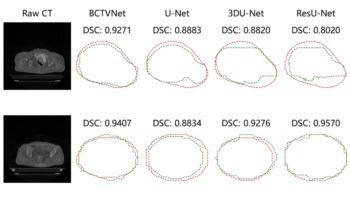Critical Mass: How One Thing Leads to Another
Philip Ball
2004 Heinemann/Farrar Straus & Giroux 660pp £25.00/$27.00hb
Can the behaviour of people be quantitatively determined, either using equations or computers? That is the question that science writer Philip Ball tackles in his latest book. Although it is relatively difficult to predict the actions of an individual person, Ball shows – using a variety of examples – how the collective behaviour of groups of people can be reliably described using various approaches borrowed from statistical physics. I very much agree with the author, whose book provides a timely survey of the latest developments at the interface between physics and the social sciences.
Originally developed to describe the behaviour of zillions of interacting molecules, it is perhaps surprising that statistical physics is relevant to social situations. But to show how it can be applied to, say, crowd behaviour, consider the following thought experiment. Imagine thousands of people standing in a public square, all of whom are asked to turn and look in one – previously undetermined – direction. If they all manage to face in the same direction, they would be demonstrating what is called “collective behaviour”.
But in practice would the entire crowd actually look in the same direction? Statistical physicists would say that it cannot be done. They would point to the theory of particles with short-ranged ferromagnetic interactions, which states that, for a 2D system in which the magnetic particles can continuously change direction, no long-range ordered phase can exist at finite temperature and zero external field. In other words, the particles will not point in the same direction. The same, by extension, should be true for people standing on a surface, which is just another 2D system.
So what does the crowd do? Locally, everyone will look in roughly the same direction. But on a large scale – when viewed from, say, a helicopter – people form vortex-like directional patterns. These are caused by slight perturbations in the directions in which people look, as a result of human error. Curiously, however, if the members of the crowd are told that they can choose to look in one of a few, given directions, the ordering can be realized. In other words, the whole crowd will look in the same direction, if given a choice of where to look! I first described this unusual analogy with ferromagnetic systems in 2001 in an essay in Nature on collective behaviour (411 421).
Perhaps even more interestingly, the models of collective motion described in the book predict that if people are asked to move in the same, previously undefined direction they will actually move in that direction. Motion produces an effective interaction, the range of which grows with time and causes global ordering. Something similar can be seen every year when thousands of Muslims circle in a well organized pattern around the Kaba stone in Mecca during Hadj as they try to avoid colliding with each other.
Ball discusses a range of behaviour – from the intricate patterns of colonies of bacteria to the complex structure of the World Wide Web. What unites these diverse phenomena is that they all take place in systems consisting of many similar units that interact in a relatively well defined manner. These interactions can be simple (attractive or repulsive) or more complex (combinations of simple interactions) and may take place between neighbours in space or on a specific underlying network.
Under some conditions, various transitions occur in such systems. During such transitions, these objects – be they particles, organisms, people or even robots – behave in a way that is almost totally determined by the collective effects of every other object in the system. The universality of these transitions follows from a celebrated theoretical framework in statistical physics called the “renormalization group method”, for which Kenneth Wilson received the 1982 Nobel Prize for Physics.
Ball displays a good understanding of the many different theoretical approaches to the “physics of society” and seems to know many of the researchers at the forefront of this research. He also provides a vivid and entertaining account of the historical background to the field. I particularly enjoyed reading about the various scholars who had been thinking about these topics several hundred years ago. In 1690, for example, the English anatomist and political thinker Sir William Petty considered the possibility of “political arithmetick” and calculated – using only numbers and simple assumptions – that “the King of England’s Subjects, have Stock, competent, and convenient to drive the Trade of the whole Commercial World”.
I was amazed to learn that there was also a flow of knowledge from the social sciences to physics. For example, when trying to understand the role of fluctuations in the world of atoms, James Clerk Maxwell was greatly inspired by the observations of social scientists like Henry Thomas Buckle. In the 1850s Buckle was one of the first historians to appreciate the role of statistics in understanding the behaviour of large numbers of quite different individuals. Could it be that Karl Marx – who wanted to describe societies with fundamental laws – also used analogies with non-living matter when constructing his theory of economics?
After providing the necessary historical and scientific background, Ball takes the reader on a long journey from the simplest forms of collective behaviour (such as people moving together) to complex situations such as the stock market or the Internet. He introduces many of the approaches that let us interpret social phenomena in quantitative terms. For example, the behaviour of people who buy stocks and shares can be modelled by many interacting “agents”. These can be represented by an algorithm that is tuned to make rational moves depending on the actions of the others.
Other models, meanwhile, examine how collective decisions are arrived at. What, for example, determines how people vote for different political parties? How can fashion, views or people be influenced? What is the “critical mass” needed to make, say, a haircut fashionable or to excite or calm rioters? Some simple models have been built to address these questions; their success depends on the complexity of the situation.
Perhaps the most successful approach has been to interpret how people interact in terms of a “hierarchical” network. It turns out that the number of “links” we have – be they friends or e-mail, business or sexual partners – is extremely unevenly distributed. Most of us have relatively few links, but there is a small number of people who have many. This finding has led to a better understanding of how infections spread in society.
In an age when we are all cleverly manipulated by the power of advertising, big business and politics – when it is hard to judge what is “real” and what is apparent in a society – it is reassuring to know that there are fundamental scientific laws behind some of our group behaviour. I highly recommend this book to anyone who prefers to rely on firm quantitative approaches, rather than mere speculation, when trying to understand the life that surrounds them.
• Philip Ball’s article “Utopia theory” appeared in Physics World last year (October 2003 pp29-33)




